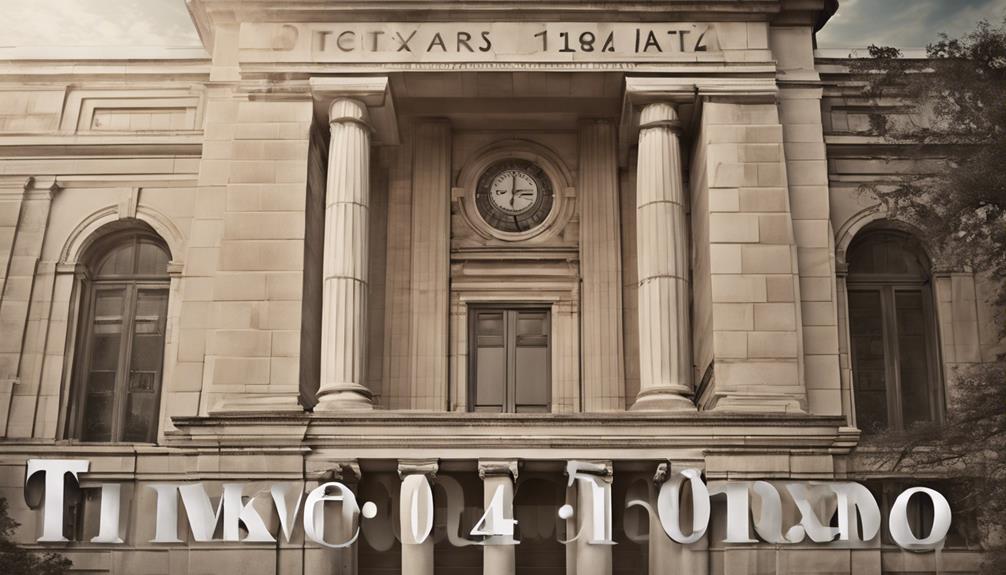Traversing the Texas divorce court process involves several important steps. Insupportability is a common reason for divorce that can affect how assets are divided. The process typically begins with filing the Initial Petition at the Court Clerk’s office. Methods for notifying the spouse include using waivers or process servers. It is crucial to respond within 20 days, and there is also an option for filing a counterpetition. The 60-day waiting period is meant to encourage potential reconciliation. The final divorce decree will address matters such as custody and property division. Understanding each stage of the process can help ensure a smoother experience. More information on the significance and impact of each step is available.
Key Takeaways
- Filing the Initial Petition for Divorce is the first step in starting the process.
- Spouses must ensure proper notification methods like waiver of service or process server.
- Responding within 20 days and potentially filing a counterpetition are crucial actions.
- Texas has a 60-day waiting period from filing for divorce, promoting reflection.
- The final Divorce Decree formalizes the end of the marriage and settlement terms.
Grounds for Divorce
When contemplating divorce in Texas, we must comprehend the various grounds available for ending a marriage. In Texas, these grounds include insupportability, cruelty, adultery, felony criminal conviction, and abandonment. Insupportability is the most common ground for divorce in Texas, allowing couples to end their marriage without assigning blame. On the other hand, adultery, cruelty, felony conviction, and abandonment are fault-based grounds that require proving specific misconduct in court.
The choice of grounds for divorce can greatly impact the proceedings, the division of assets, and potential alimony awards. It's vital to grasp the legal basis for ending a marriage in Texas to navigate these waters effectively. By understanding the different grounds available and their implications, individuals can make informed decisions that align with their goals for the divorce process. In Texas divorce cases, knowing the grounds and how they may influence the outcome is essential for a smoother and more empowered divorce journey.
Filing the Petition

When filing for divorce in Texas, understanding the required forms for filing and the court filing process is essential. These points are important to kickstart the legal proceedings smoothly and efficiently.
Ensuring all necessary paperwork is completed accurately is crucial for a successful start to the divorce process.
Required Forms for Filing
To file for divorce in Texas, we must submit the necessary form known as the Initial Petition for Divorce to the court clerk. This form kickstarts the divorce process and is the first step in officially ending the marriage. Along with the petition, a court fee must be paid to initiate the case. The court clerk then assigns a unique case number, important for tracking the progress of the divorce proceedings. Here is a helpful table to outline the key points regarding the required forms for filing:
| Required Forms for Filing | Details |
|---|---|
| Form Name | Initial Petition for Divorce |
| Submission Location | Court Clerk's Office |
| Associated Fee | Required for Case Commencement |
Court Filing Process
Initiating the divorce process in Texas involves starting the court filing by submitting the Original Petition for Divorce in the appropriate court. A court fee is required at the time of filing the petition to jumpstart the divorce case.
Jurisdiction for the divorce case is typically determined by the parties' length of residency in the county. Once the petition is filed, the court clerk assigns a case number, officially marking the beginning of the divorce process.
Filing the petition with the court is the vital first step in moving forward with the legal dissolution of marriage in Texas. This process guarantees that all legal requirements are met and sets the stage for the subsequent steps in the Texas divorce proceedings.
Providing Spouse Notice
Ensuring proper service of divorce papers to the spouse is an essential step in the Texas divorce process. After filing for divorce, providing notice to the spouse can be accomplished through various methods such as a waiver of service, using a process server, or resorting to publication if other options are not viable. A valid waiver of service, obtained after filing the original petition, guarantees that the spouse is informed about the divorce proceedings. However, if a waiver is not feasible, personal service of divorce papers becomes necessary to ensure proper notice. In rare cases where personal service is not achievable, posting or publication of a divorce notice may be the last resort. Regardless of the method used, ensuring that the spouse receives legal notice is vital in the divorce process to keep both parties informed and provide them with the opportunity to respond promptly.
| Method | Description | Purpose |
|---|---|---|
| Waiver of Service | Spouse acknowledges divorce without formal service. | Confirm spouse is informed. |
| Process Server | Legal professional delivers papers to the spouse. | Provide official notification. |
| Publication | Divorce notice published in a designated publication. | Notify spouse through publication. |
Spouses Answer and Counterpetition

After receiving the divorce petition, spouses are required to respond within 20 days by submitting an answer or potentially filing a counterpetition. The respondent can use the counterpetition to state their own grounds for divorce.
It's vital to make sure that the counterpetition is served on the opposing party following all legal requirements. In court proceedings, the respondent holds the right to present requests and arguments, utilizing the counterpetition to assert their own claims and requests in the divorce process.
This step allows both parties to address their concerns, voice their perspectives, and seek resolutions that align with their needs and desires. By filing a counterpetition, individuals can actively participate in shaping the direction of the divorce proceedings, ensuring that their viewpoints are acknowledged and considered throughout the legal process.
Waiting Period

During divorce proceedings in Texas, a vital waiting period of 60 days is observed starting from the date the Original Petition for Divorce is filed. This waiting period allows for contemplation and the possibility of reconciliation before finalizing the divorce. In cases involving domestic violence, exceptions to the waiting period may be granted to guarantee the safety of the parties involved. The waiting period aims to give couples time to ponder their decision and potentially come to an agreement, leading to an uncontested divorce. Below is a table summarizing key points about the waiting period in Texas:
| Key Points | Details | Importance |
|---|---|---|
| Duration | 60 days from filing the Original Petition for Divorce | Allows time for reflection and decision-making |
| Exceptions | Domestic violence cases may have waivers | Ensures safety of all parties involved |
| Purpose | Encourages reconciliation and uncontested agreements | Promotes amicable resolutions |
The waiting period is a critical step in the divorce process, ensuring that decisions are made thoughtfully and with contemplation for all parties involved.
Divorce Decree

Upon finalization of the divorce process in Texas, the divorce decree acts as the critical legal document that officially ends the marriage and delineates the terms of the divorce settlement. This final document covers essential aspects such as child custody, visitation schedules, child support, alimony, and the division of property.
It's important to note that the divorce decree must bear the signature of a judge to become official and enforceable. Both parties are legally obligated to adhere to the stipulations outlined in the divorce decree. Failure to comply can result in serious legal consequences.
Additionally, the divorce decree serves as an important reference point for any future disputes or modifications that may arise between the parties. By understanding and abiding by the terms set forth in the divorce decree, individuals can navigate the post-divorce landscape with clarity and assurance, promoting a sense of freedom and autonomy in moving forward.
Frequently Asked Questions
What Are the Steps to a Divorce in Texas?
We file an Original Petition for Divorce, serve our spouse legal notice, wait 60 days, attend a final hearing where the judge signs the Final Decree, and comply with its terms for completion in Texas.
What Questions Are Asked at a Divorce Final Hearing in Texas?
At the final hearing in a Texas divorce, the judge may inquire about child custody, support agreements, property division, and settlement fairness. They might request clarification on any remaining disputes and guarantee both parties comprehend and agree with the decree terms.
What Is the 10 Year Rule in Divorce in Texas?
We should know that in Texas divorce, the 10 year rule may entitle a spouse to spousal maintenance if the marriage lasted a decade. It secures financial support for a spouse with inadequate property post-long-term marriage.
Does Texas Require Court Appearance for Divorce?
Yes, in Texas, a court appearance is often necessary for divorce proceedings. Both parties must attend hearings, present evidence, and testify. Uncontested divorces may skip this step. Court appearances help resolve disputes and make sure legal requirements are met.
How Do Temporary Orders Factor into the Overall Texas Divorce Court Process?
When going through a divorce in Texas, navigating temporary orders in Texas is a crucial step in the overall court process. Temporary orders can address issues such as child custody, visitation, and financial support while the divorce is ongoing. Understanding and following these orders is essential for a smooth legal process.
Conclusion
To sum up, maneuvering through the Texas divorce court process can be intricate, but with the right guidance, it's manageable. Remember, every marriage is unique, and there's no one-size-fits-all solution.
Take it one step at a time, cross your t's and dot your i's, and you'll soon be on your way to a fresh start. Remember, Rome wasn't built in a day – and neither is a divorce decree.
Stay patient and focused, and you'll get through it.










